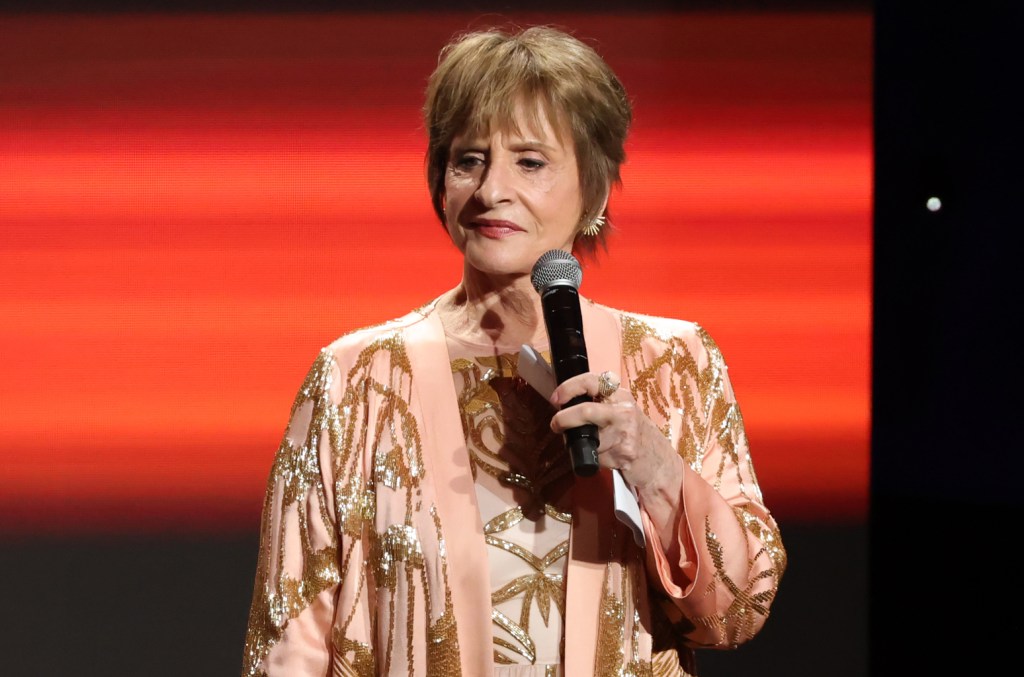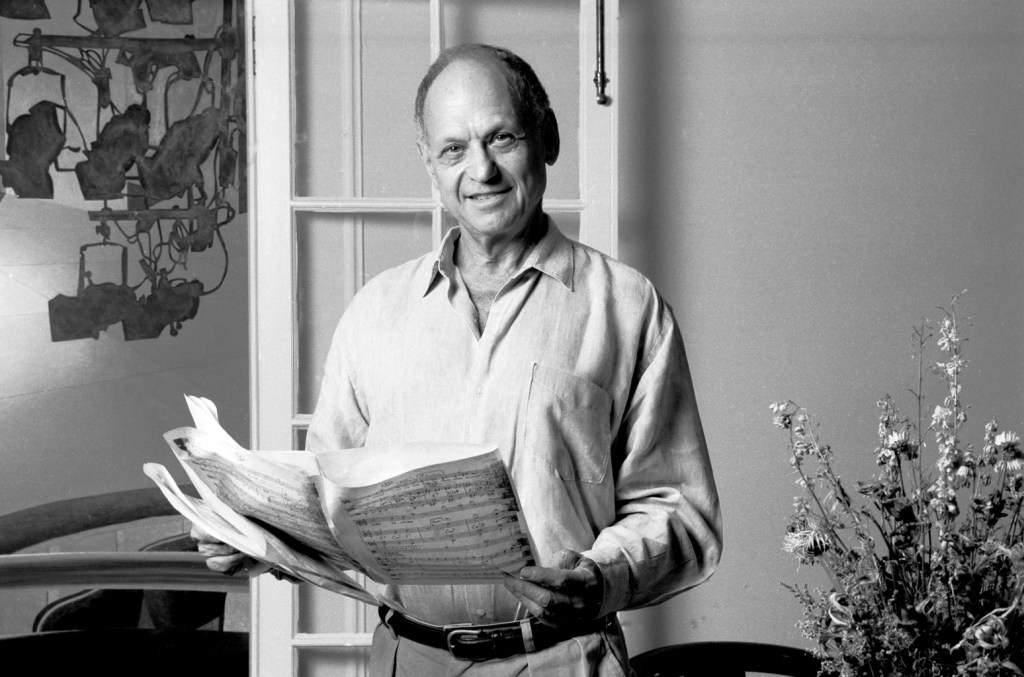broadway
Page: 2

Jennifer Lopez unveiled the first look at her next big-screen role in Kiss of the Spider Woman on Thursday (June 5). In the teaser trailer, J.Lo stars as Ingrid Luna, an Old Hollywood actress whose litany of dazzling, song-and-dance roles are dreamt up by a pair of prisoners (played by Diego Luna and Tonatiuh) stuck […]
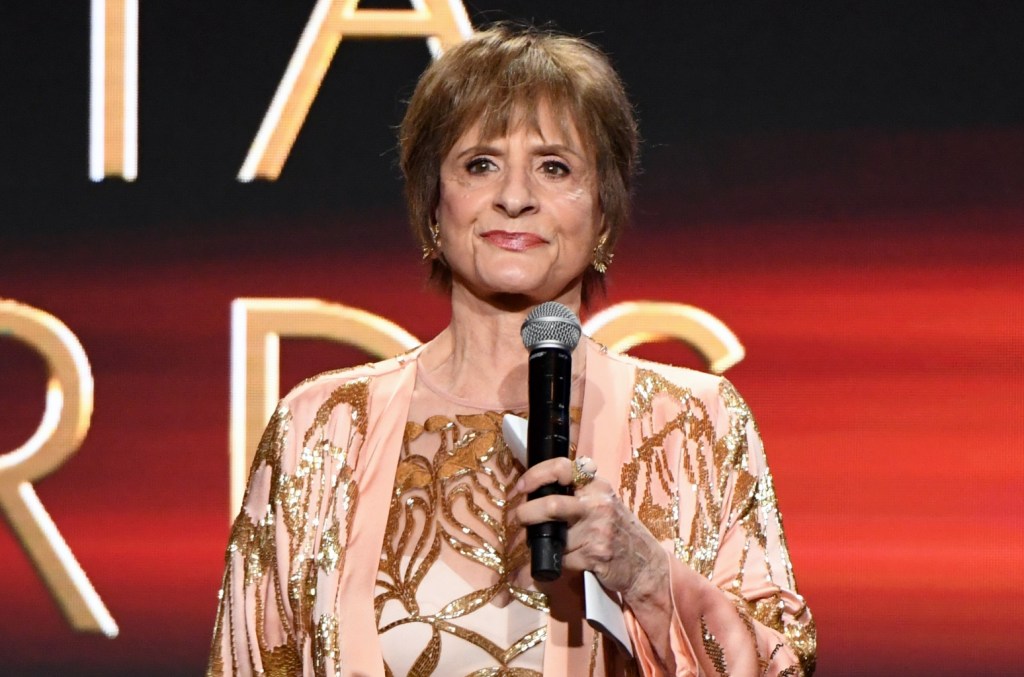
Patti LuPone has issued an apology after hundreds of members of the Broadway community condemned her recent remarks disparaging fellow actresses Kecia Lewis and Audra McDonald.
“For as long as I have worked in the theatre, I have spoken my mind and never apologized. That is changing today,” LuPone wrote in the opening of a statement released via Instagram on Saturday (May 31).
“I am deeply sorry for the words I used during The New Yorker interview, particularly about Kecia Lewis, which were demeaning and disrespectful. I regret my flippant and emotional responses during this interview, which were inappropriate, and I am devastated that my behavior has offended others and has run counter to what we hold dear in this community. I hope to have the chance to speak to Audra and Kecia personally to offer my sincere apologies,” said LuPone.
Trending on Billboard
LuPone’s response arrived the day after after an open letter directed at her — and signed by more than 500 individuals in the Broadway world — was published in outcry to comments from the actress perceived to be “degrading and misogynistic,” as well as a “blatant act of racialized disrespect.” The letter was also aimed at “a culture, a pattern” in the Broadway industry: “a persistent failure to hold people accountable for violent, disrespectful, or harmful behavior — especially when they are powerful or well-known.”
In Saturday’s statement, LuPone acknowledged the message of the letter and expressed regret over what she said about her peers.
“I wholeheartedly agree with everything that was written in the open letter shared yesterday,” she wrote. “From middle school drama clubs to professional stages, theatre has always been about lifting each other up and welcoming those who feel they don’t belong anywhere else. I made a mistake, I take full responsibility for it, and I am committed to making this right. Our entire theatre community deserves better.”
The New Yorker ran a profile on LuPone earlier this week that quoted hercalling Lewis — who’s in the Alicia Keys-created Broadway musical Hell’s Kitchen, which was performed next door to the LuPone-starring The Roommate in 2024 — a “b—-” for considering herself a stage “veteran.”
The piece had LuPone recounting complaints she’d made to Shubert Organization head Robert Wankel that sound from Lewis’ Hell’s Kitchen could be heard during her stage time in The Roommate. (Lewis had responded to LuPone’s complaints on Instagram at the time, and deemed them “bullying,” “racially microaggressive” and “rooted in privilege” for calling “a Black show loud.”)
“She calls herself a veteran?” LuPone said in The New Yorker article dated May 26. “Let’s find out how many Broadway shows Kecia Lewis has done, because she doesn’t know what the f— she’s talking about. Don’t call yourself a vet, b—-.”
LuPone also remarked that she had a “rift” with McDonald, who’d shown support for Lewis: “That’s typical of Audra. She’s not a friend,” LuPone told The New Yorker; McDonald later said she was unaware of the rift.
LuPone, a three-time Tony Award and two-time Grammy Award winner, in 2024 starred as Robyn opposite Mia Farrow’s Sharon in The Roommate for the dark comedy’s four-month engagement on Broadway at the Booth Theatre. She just wrapped a series of concert dates that ran across select U.S. cities from late January through late May, with a couple festival appearances slated for this summer.
Lewis won her first Tony, for best featured actress in a musical, for her work as Miss Liza Jane in Hell’s Kitchen, the Broadway production whose performers were also awarded the Grammy for best musical theater album in 2024. Hell’s Kitchen is presently still on Broadway at the Shubert Theatre.
Following Patti LuPone‘s recent remarks disparaging fellow Broadway actresses Audra McDonald and Kecia Lewis, more than 500 members of the Broadway community have signed an open letter calling out the musical theater legend for “bullying” and “harassment.”
In the message published Friday (May 30) — just a few days after a New Yorker piece quoted LuPone as saying that McDonald was “not a friend” while calling Cole a “bi—” for labeling herself a stage “veteran” — the signatories wrote that the Agatha All Along star’s comments were “degrading and misogynistic,” as well as a “blatant act of racialized disrespect.” People who signed the letter include Courtney Love, as well as Tony winners James Monroe Iglehart, Maleah Joi Moon and Wendell Pierce.
“It constitutes bullying,” the letter continues. “It constitutes harassment. It is emblematic of the microaggressions and abuse that people in this industry have endured for far too long, too often without consequence.”
Trending on Billboard
Though the signatories directly urged the American Theatre Wing and the Broadway League to disinvite LuPone from the 2025 Tony Awards — as well as other “industry events” such as “fundraisers and public programs” — they also insisted that their message was about “more than one person.”
“It is about a culture. A pattern. A persistent failure to hold people accountable for violent, disrespectful, or harmful behavior — especially when they are powerful or well-known,” the letter reads. “This is not about differing opinions. It is about public actions that demean, intimidate, or perpetuate violence against fellow artists. It is about the normalization of harm in an industry that too often protects prestige over people.”
Billboard has reached out to LuPone’s rep for comment.
The letter adds to the online backlash LuPone has been facing since her New Yorker profile went live Monday. In the piece, LuPone reflected on how she once asked Shubert Organization head Robert Wankel to step in after sound from the Alicia Keys-created musical Hell’s Kitchen, in which Lewis starred, could be heard during LuPone’s performances of The Roommate next door on Broadway. Shortly after LuPone’s complaint, Lewis posted an Instagram video labeling the icon’s actions as “bullying,” “racially microaggressive” and “rooted in privilege” for calling “a Black show loud.”
“She calls herself a veteran? Let’s find out how many Broadway shows Kecia Lewis has done, because she doesn’t know what the f— she’s talking about,” LuPone told The New Yorker of the situation. “Don’t call yourself a vet, bi—.”
As for McDonald, LuPone took issue with the Private Practice star showing support for Lewis in the comments of said Instagram video. “I thought, You should know better,” LuPone told the publication, noting that there had been an undisclosed “rift” between the two actresses. “That’s typical of Audra. She’s not a friend.”
McDonald later responded in an interview with Gayle King, saying she had no idea what “rift” LuPone was referring to.
But while the comments could be regarded as typical for the famously forthright LuPone, the members of the Broadway community who signed Friday’s open letter thinks she crossed a line. “To publicly attack a woman who has contributed to this art form with such excellence, leadership, and grace … is not simply a personal offense,” their statement reads. “It is a public affront to the values of collaboration, equity, and mutual respect that our theater community claims to uphold.
“We cannot continue to welcome back those who harm others simply because of their fame or perceivedvalue,” it concludes. “This must stop. We will no longer tolerate violence—verbal, emotional, or physical—against artists within our own community. No more free passes. If our industry is truly committed to equity, justice, and respect, then those values must be applied consistently, even when it’s uncomfortable.”
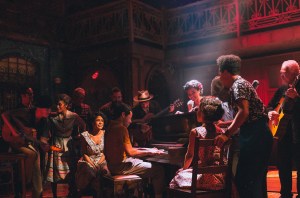
Two Latin-themed musicals have opened on Broadway within five weeks of each other, receiving some love from the Tonys this year: Buena Vista Social Club, which co-leads the list of nominees for the June 8 awards ceremony with 10 nods, and Real Women Have Curves: The Musical, which received two.
Buena Vista Social Club — which narrates the story of the Cuban artists who brought the acclaimed Grammy-winning album of 1997 to the world — competes in categories including best musical, best performance by an actress in a featured role (Natalie Venetia Belcon), best book (Marco Ramirez) and best direction (Saheem Ali). Furthermore, the musicians who make up the band in the show will be recognized with a special Tony Award.
Real Women Have Curves: The Musical is nominated for best original score — by Latin music star Joy Huerta (half of the Mexican pop duo Jesse & Joy) and Benjamin Velez — and best performance by an actress in a featured role (Justina Machado). Based on the play by Josefina López and HBO’s movie adaptation, it follows 18-year-old Ana García, a daughter of immigrant parents who struggles between her ambitions of going to college and the desires of her mother for her to get married, have children and oversee the small, rundown family-owned textile factory.
And a third Latin-themed show is currently in the works: BASURA, with music and lyrics by no other than Cuban-American superstar Gloria Estefan and her daughter, songwriter Emily Estefan. Inspired by a true story, BASURA (Spanish for “garbage”) will narrate the journey of Paraguay’s Recycled Orchestra, a group of young artists who turn scrap material into instruments and music into possibilities.
But Broadway has had a long-standing history affair with Latin music and artists, with shows ranging from classics like West Side Story, Kiss of the Spider Woman, Evita and Man of La Mancha, to more recent productions like In the Heights and On Your Feet! — and legendary stars from Rita Moreno and Chita Rivera, to Lin-Manuel Miranda.
There was also the short-lived The Capeman [1998] starring Rubén Blades, Marc Anthony and Ednita Nazario, a Paul Simon musical based on the life of convicted murderer Salvador Agrón which closed after only two months; and Women on the Verge of a Nervous Breakdown [2010], an adaptation of Pedro Almodóvar’s iconic black comedy film, which received mostly negative reviews and lasted three months.
Meanwhile, some non-Latin themed shows have featured Latin stars throughout the years, like Hamilton, starting with creator Lin-Manuel Miranda and including Anthony Ramos and Javier Muñoz; and Chicago, with Mexican actress Bianca Marroquín playing both Roxie and Velma intermittently since 2006, and star guests including Sofía Vergara, Jaime Camil and Sebastián Yatra.
In honor of the 78th Tony Awards, scheduled for June 8 at the Radio City Music Hall and airing live on CBS and Paramount+, here are eight of the best Latin-themed Broadway musicals from past and present, in alphabetical order.
Buena Vista Social Club
Image Credit: Ahron R. Foster/Courtesy of Atlantic Theater Company
Audra McDonald has responded to Patti LuPone‘s recent disses. Shortly after LuPone said that her fellow Broadway legend was “not a friend,” citing a past “rift” between them, McDonald told Gayle King for CBS Sunday Morning, “If there’s a rift between us, I don’t know what it is.” “That’s something that you’d have to ask […]
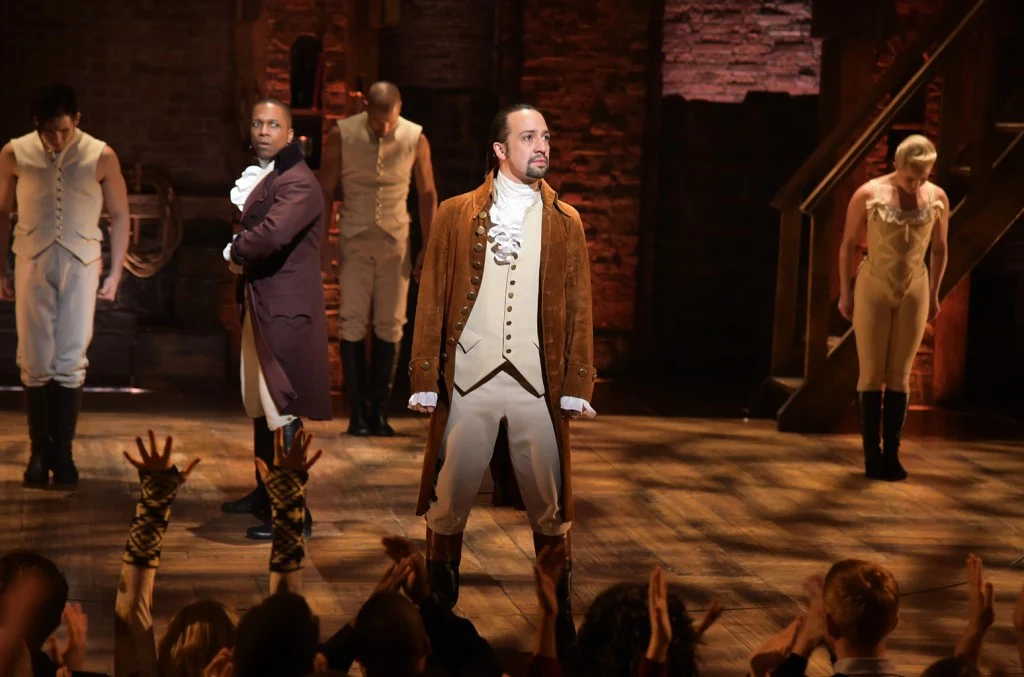
More than two dozen members of the original cast of Hamilton will reunite to perform at the 2025 Tony Awards on Sunday, June 8, to celebrate the show’s 10th anniversary.
Lin-Manuel Miranda, who wrote lyrics, music and book for the landmark show, will be participating in the performance, along with Carleigh Bettiol, Andrew Chappelle, Ariana DeBose, Alysha Deslorieux, Daveed Diggs, Renée Elise Goldsberry, Jonathan Groff, Sydney James Harcourt, Neil Haskell, Sasha Hutchings, Christopher Jackson, Thayne Jasperson, Jasmine Cephas Jones, Stephanie Klemons, Morgan Marcell, Javier Muñoz, Leslie Odom, Jr., Okieriete Onaodowan, Emmy Raver-Lampman, Jon Rua, Austin Smith, Phillipa Soo, Seth Stewart, Betsy Struxness, Ephraim Sykes and Voltaire Wade-Greene.
Hamilton opened on Broadway on Aug. 6, 2015, at the Richard Rodgers Theatre following 26 preview performances. It has since played more than 3,440 performances. At the 2016 Tony Awards, Hamilton made history with a record-breaking 16 nominations. It won a near-record 11 awards, including best musical. The show also won the Olivier Award, Pulitzer Prize for Drama, and an unprecedented special citation from the Kennedy Center Honors.
Trending on Billboard
The cast album, which won a Grammy for best musical show album, has also shattered records. On June 26, 2023, it became the first original cast album to be certified Diamond by the RIAA. One month ago, it became the first original cast album to log 500 weeks on the Billboard 200. (The album, which ranks No. 35 this week, is currently in its 504th week on the chart.) This year, in its first year of eligibility, the cast album was inducted into the National Recording Registry. (Albums become eligible 10 years after their release.)
The 78th Annual Tony Awards will return to the legendary Radio City Music Hall in New York City. Hosted by Tony, Emmy, and Grammy Award-winner and three-time Oscar nominee Cynthia Erivo, The American Theatre Wing’s Tony Awards will broadcast live to both coasts on Sunday, June 8, from 8 to 11 p.m. ET on CBS, and streaming on Paramount+ in the U.S.
In addition to participating in the Hamilton performance, Goldsberry will cohost The Tony Awards: Act One, a live pre-show with exclusive content that is available to viewers for free on Pluto TV beginning Sunday, June 8, at 6:40-8 p.m. ET. Viewers can access The Tony Awards: Act One on their smart TV, streaming device, mobile app or online by going to Pluto TV.
The Tony Awards are produced in collaboration with Tony Award Productions, a joint venture of the American Theatre Wing and The Broadway League, and White Cherry Entertainment. Ricky Kirshner and Glenn Weiss are executive producers and showrunners for White Cherry Entertainment. Weiss will serve as director.

As the original Angelica Schuyler in Hamilton, Renée Elise Goldsberry got to embrace pop diva fierceness onstage eight times a week — and won a Tony Award in the process.
Explore
Explore
See latest videos, charts and news
See latest videos, charts and news
The actress, who also won a Grammy when the Hamilton original Broadway cast recording took home best musical theater album, has kept busy since — notably as the hilariously over-the-top girl group alum Wickie on Peacock/Netflix musical comedy series Girls5Eva — but she’s now stepping into the spotlight in a new way: with her independently-released debut album, Who I Really Am, out June 6. It’s mostly written by Goldsberry herself, with the notable exception of “Satisfied,” her personal eleven-o-clock number from Hamilton. “I think the song becomes a lovely bridge from how you know me as a recording artist to the rest of my music as a recording artist,” Goldsberry tells Billboard. What always felt like a “deer in the headlights” moment during the show, she says, became less scary knowing the ensemble was still around her — and placed in the new context of the album, her backup vocalists and band have taken on that role.
Ahead of the reimagined “Satisfied” release today, Goldsberry spoke to Billboard about her evolving relationship to the number that required her to both belt and rap, and the surprising way that tapping into her Girls5Eva character helped her take on this new version.
Trending on Billboard
Renée Elise Goldsberry in Hamilton.
Courtesy of Hamilton On Broadway
How did learning and performing “Satisfied” as much as you have help you grow as a vocalist and performer overall?
What’s most virtuosic about it is the speed of the rap – but that was always very natural for me. It’s so well-constructed, it makes so much sense. I understood immediately the way [Angelica’s] brain works, how someone that smart and passionate can make a decision that’s that complex in an instant.
What was challenging for me was singing through the emotion that holds so much sacrifice at the end of the song. Signing that live was the thing that was so frightening – Will i be able to make sound at the end of this, when I have to act on the decision I just made? The album single version of this song continues to grow – it doesn’t drop back down into vulnerability, it just keeps driving, and that’s a lovely evolution for me in it.You did so much of the writing yourself on this album; I presume it took a lot of thought to decide what to include that wasn’t by you. Why did this feel important to have in the mix?
In 2020, we were promoting Hamilton on Disney+ — and at the exact same time I was writing this album, and the last thing on my mind would have been to include a song I didn’t write, even the song I’m most famous for singing. So it’s so funny to come full circle and be so proud of having this track on the album. What Hamilton has turned into is something that belongs to everyone, and everyone I think knows it better than me now. So it’s a wonderful thing to feel it separate from the show — and when I finally had the courage to share it with Lin and he also liked it, that was the sign-off I needed. Why was it scary to present it to him? I’m not a huge believer in remaking things that are perfect. Luther Vandross can remake anybody’s song, Whitney Houston did a really good job with “I Will Always Love You” — but unless you’re comin’ like that, I think you should leave well enough alone. [Laughs.] I didn’t do it to improve upon it; I just found a way for it to live outside of a perfect show.
Renée Elise Goldsberry, “Satisfied”
Courtesy Photo
How has your relationship to performing it changed over the years? At this point it must feel a little like the hit everyone wants a pop star to perform in concert, even if they occasionally need a break from it….
In the very beginning, I said: “If for the rest of my life when I walk out, somebody plays this song, I’ll be thrilled.” And then what you’re saying is also true; we have an interesting relationship with the things we owe the most to in terms of our career. At some point, we want to prove we can do something else — so there might be a stage where we’re trying to be defined as something different, and then we full circle land on gratitude.
It’s funny that it’s only been ten years — but I’m already full circle grateful. I don’t feel like it’s in any way diminishing, like, “This is your one thing.” It’s such a gift, and also there’s so much challenge in it, so much to discover, it will never feel too small for me. As a big Girls5Eva fan, I have to ask: Do you see any ways in which playing Wickie helped you on this album? Does tapping into her energy help you diva out?
At this very moment, something just became very clear for me: the alter ego of a Sasha Fierce…even in Girls5Eva, Dawn has this Fledge Mulholland alter ego so this mom and wife can feel as powerful as she did onstage. And I just realized Wickie is mine.
There are a lot of things about her I don’t take into my life — but the unapologetic ambition is critical, especially when you’re doing something that no one asked you to do. No one asked me, “Who are you really, Renée?” I just chose to answer it, and Wickie would do that — and she’d do it bravely and with a very unique sense of style! And she’s the Energizer Bunny — she never ever stops trying to move forward, and I need a little bit of that. I have so many more stories to tell.
Composer Charles Strouse, who died Thursday at age 96, was Broadway royalty – a three-time Tony winner for Bye Bye Birdie, Applause and Annie. He also won a Grammy for the Annie cast album and a Primetime Emmy for a 1996 revival of Bye Bye Birdie starring Jason Alexander and Vanessa Williams. Strouse was inducted into the Songwriters Hall of Fame in 1985.
Even if you’re not a Broadway buff, you know at least a few of Adams’ songs. Annie spawned the instant standard “Tomorrow,” which Barbra Streisand covered on her platinum album Songbird. Jay-Z had a top 15 hit on the Billboard Hot 100 in 1999 with “Hard Knock Life (Ghetto Anthem),” which sampled “It’s the Hard Knock Life” from Annie.
Bye Bye Birdie, about a pop star who was drafted to go into the Army (inspired by Elvis Presley, the biggest pop star of the 1950s, who experienced a similar fate at the height of his fame), also spawned a standard – the jaunty “Put on a Happy Face,” which Dick Van Dyke performed in the musical (and in the 1963 film version). The song was covered by such artists as Nancy Wilson, Johnny Mathis, The Supremes and Tony Bennett. Bye Bye Birdie also included the spirited “A Lot of Livin’ to Do,” which was recorded by such stars as Bobby Rydell.
Trending on Billboard
Strouse was born Charles Louis Strouse in New York City on June 7, 1928. In 1949 he met lyricist Lee Adams at a party, which led to a long and successful musical partnership. The duo began by writing tunes for numerous revues, as well as special material for performers such as Kaye Ballard, Carol Burnett, Jane Morgan and Dick Shawn.
In 1958, Strouse teamed with Fred Tobias to write “Born Too Late,” which became a No. 7 hit on the then-new Hot 100 for Poni-Tails, a female vocal trio.
Strouse teamed with Adams to write the songs for several long-running Broadway musicals. They won Tonys for best musical in 1961 for Bye Bye Birdie (for which Van Dyke won a Tony) and in 1970 for Applause (for which Lauren Bacall won a Tony). They were nominated for a Tony for best musical in 1965 for Golden Boy (for which Sammy Davis Jr. was nominated for a Tony).
Even some of their lesser hits spawned memorable songs. 1962’s All American, which starred Ray Bolger, closed after 80 performances. However, one song from the score, “Once Upon a Time,” became an oft-performed standard of the 1960s, with recordings by such top singers as Tony Bennett, Vic Damone, Perry Como, Bobby Darin and Frank Sinatra. Richard Carpenter performed the poignant ballad at a 1983 concert soon after the death of his sister, Karen Carpenter.
Strouse scored the 1967 film classic Bonnie and Clyde, which brought him a Grammy nod for best original score written for a motion picture or TV special. Strouse and Adams wrote songs for The Night They Raided Minsky’s, a 1968 film produced by Norman Lear. While that film was only a modest hit, their collaboration with the producer would be a blockbuster.
In 1970, Strouse and Adams were asked to write a theme song for a TV show that Lear was developing. The show, which debuted in January 1971, was All in the Family, the biggest and most groundbreaking TV hit of the decade. Series stars Carroll O’Connor and Jean Stapleton performed the theme song “Those Were the Days,” which perfectly captured the tone of the show, from its opening lines: “Boy, the way Glenn Miller played/ Songs that made ‘The Hit Parade’/ Guys like us we had it made/ Those were the days.” The title sequence, of Archie and Edith performing the tune at their piano, is said to have been inspired by Strouse’s childhood memories of playing music with his parents at home. Released as a single, the original version reached No. 43 on the Hot 100 in 1972.
Several of Strouse’s scores climbed high on the Billboard 200. The Bye Bye Birdie cast album reached No. 12 (the subsequent film soundtrack climbed even higher – No. 2 in 1963). A TV soundtrack to All in the Family (which included “Those Were the Days”) reached No. 8 in 1972. The Annie cast album petered out at No. 81, but went platinum.
While Strouse is probably best known for his long partnership with Adams – who is still living at age 100 – he also collaborated with other lyricists. He and Martin Charnin teamed to write Annie, which won seven Tony Awards, including best musical and best original score.
Strouse received three subsequent Tony nominations for best original score, working with a different lyricist on each of the shows. He teamed with David Rogers on Charlie and Algernon (1981); with Steven Schwartz on Rags (1987); and with Richard Maltby, Jr. on Nick and Nora (1992).
Two revivals of Annie have received Tony nominations for best revival of a musical. In addition, a live staging of the show, titled Annie Live!, was produced for NBC in 2021.
Strouse loved what he did and remained active, which was doubtless a key to his longevity. “I work every day,” he told The Associated Press during an interview on the eve of his 80th birthday in 2008. “Activity — it’s a life force. When you enjoy doing what you’re doing, which I do very much, I have something to get up for.”
Strouse died at his home in New York City, his family said. Strouse’s wife, director-choreographer Barbara Siman, died in 2023. He is survived by four children, Ben, Nick, Victoria and William.

The New York Knicks are riding hot as a rocket blast in the 2025 NBA Playoffs, and Nick Jonas has an inkling that his role in Broadway‘s The Last Five Years might have something to do with the team’s success.
Explore
Explore
See latest videos, charts and news
See latest videos, charts and news
“OK, so real quick: The Knicks are in the playoffs, and they could advance to the next round if they win their game against the Celtics tonight,” the superstar explained in an Instagram video posted Wednesday (May 14). “During rehearsals for The Last Five Years, I said to our director, ‘I really think Jamie,’ my character, ‘should be a New York basketball fan.’ And she was like, ‘Great. What team?’
“And I was like, ‘Well, hmm…good question, what team.’ And eventually we decided to make Jamie a Knicks fan,” the pop singer-turned-Broadway star continued.
Trending on Billboard
From his dressing room, Jonas then showed off a vintage Knicks crewneck found by The Last Five Years costume designer Dede Ayite, explaining that he wears the shirt during every performance of “Moving Too Fast,” one of Jamie’s first big musical numbers in the show.
“So I’m not saying that the Knicks are in the playoffs and could potentially go to the next round because of The Last Five Years and because of this,” he then concluded, gesturing to his costume. “But coincidence? I think not.”
While the Knicks ultimately lost Wednesday night’s game, they’re still currently leading the Celtics 3-2 in the Eastern Conference semifinals, and will have home court advantage going into Game 6 on Saturday night (May 16) at Madison Square Garden.
Meanwhile, Jonas has six more weeks of his run on Broadway before The Last Five Years closes its limited engagement at the Hudson Theatre on June 22. After that, he’ll segue full force into album mode, with the Jonas Brothers’ seventh LP, Greetings from Your Hometown, set for release Aug. 8 — two days before the kickoff of JONAS20: Living the Dream Tour, the North American trek celebrating their 20th anniversary as a band.
Check out Jonas’ witty theory before it expires on his Instagram Stories here.
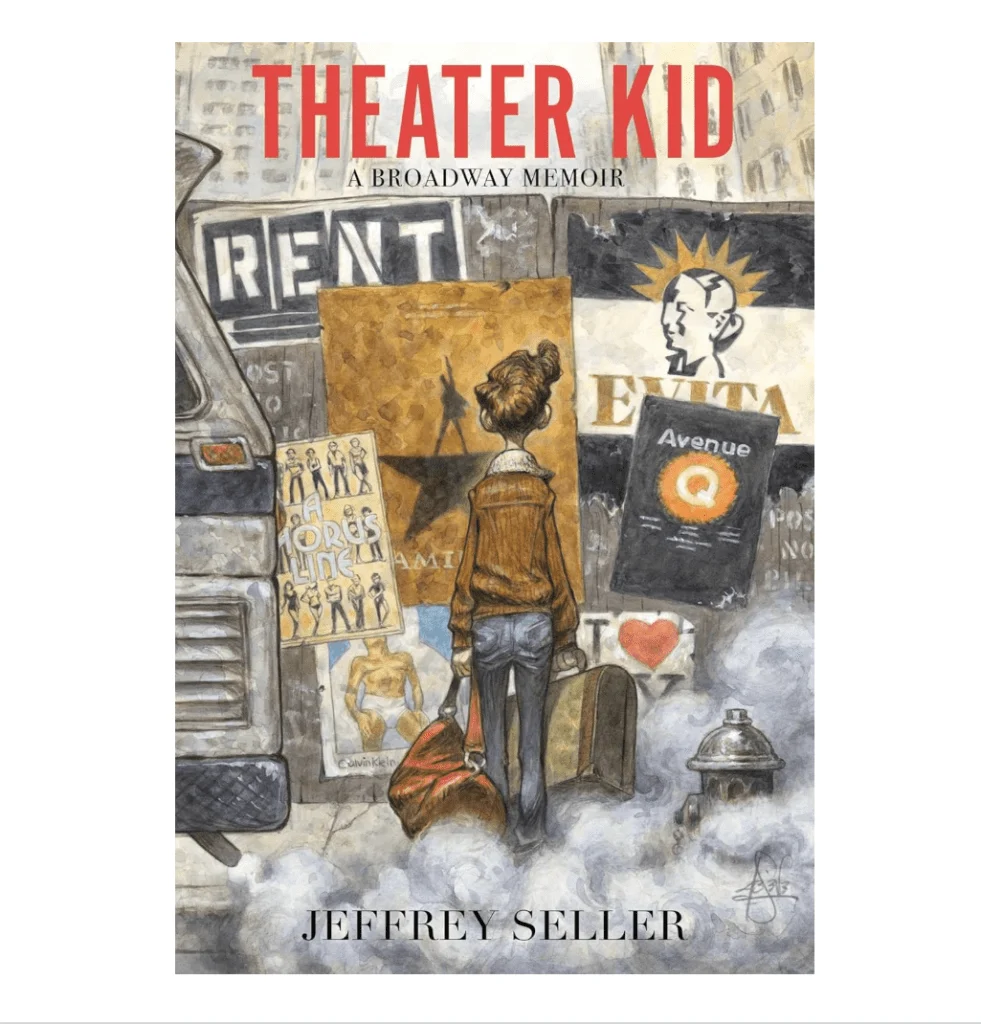
All products and services featured are independently chosen by editors. However, Billboard may receive a commission on orders placed through its retail links, and the retailer may receive certain auditable data for accounting purposes.
Acclaimed producer Jeffrey Seller has just released his memoir titled Theater Kid: A Broadway Memoir, sharing a look into his life pre and post Broadway fame. The novel is currently number one on Amazon’s Broadway Biographies list and on sale for $22. The memoir is also available as an audio CD, retailing for $29.24 and on Kindle for $14.99.
Explore
Explore
See latest videos, charts and news
See latest videos, charts and news
NEW RELEASE
Theater Kid: A Broadway Memoir
$22.33
$29.99
26% off
Seller is a well-known American theatrical producer who knows the industry inside and out. The producer’s resume speaks for itself, with three Best Musical Tony Award-winning Broadway shows under his belt for his work on productions like Rent, Avenue Q and In the Heights.
Released May 6, the new memoir is a coming-of-age tale that follows a young Seller before the accolades and star-studded career, at a time when he was juggling life living in a poor neighborhood just outside of Detroit.
The book touches on Seller’s sexuality, adoption and his longing to create in a world that didn’t foster creativity, and how he found his place — and belonging — in the Broadway community. From his youth, we are transported to Seller’s life spent as an office assistant, to meeting stars like Jonathan Larson and Lin-Manuel Miranda. The memoir also touches on finding new audiences, to creating amidst the HIV AIDS crisis. Seller also takes the audience along for a look into his whirlwind Tony Awards journey.
Ultimately, the novel offers readers a look behind the glitz and glam, offering Seller’s perspective on the creation of musicals, all while juggling his own reality and struggles. This read is for those curious, Broadway-loving folk who long for an insider’s perspective on the inner workings of Broadway’s most beloved musicals.
Though he’s best-known for his work on Rent, Seller also produced Hamilton in 2015 alongside Lin-Manuel Miranda, which he’d worked with previously on In the Heights. Seller also revolutionized theater accessibility with the creation of the $20 ticket lottery system he created for Rent, making theater available to anyone.

 State Champ Radio
State Champ Radio 